Volume 10, Issue 1
Displaying 1-8 of 8 articles from this issue
- |<
- <
- 1
- >
- >|
-
2008 Volume 10 Issue 1 Pages 8-10
Published: March 30, 2008
Released on J-STAGE: January 25, 2011
Download PDF (1133K) -
2008 Volume 10 Issue 1 Pages 11-14
Published: March 30, 2008
Released on J-STAGE: January 25, 2011
Download PDF (631K) -
2008 Volume 10 Issue 1 Pages 15-18
Published: March 30, 2008
Released on J-STAGE: January 25, 2011
Download PDF (580K) -
2008 Volume 10 Issue 1 Pages 19-27
Published: March 30, 2008
Released on J-STAGE: January 25, 2011
Download PDF (2647K) -
2008 Volume 10 Issue 1 Pages 29-37
Published: March 30, 2008
Released on J-STAGE: January 25, 2011
Download PDF (4014K) -
2008 Volume 10 Issue 1 Pages 39-44
Published: March 30, 2008
Released on J-STAGE: January 25, 2011
Download PDF (1785K) -
2008 Volume 10 Issue 1 Pages 45-52
Published: March 30, 2008
Released on J-STAGE: January 25, 2011
Download PDF (2688K) -
2008 Volume 10 Issue 1 Pages 53-88
Published: March 30, 2008
Released on J-STAGE: January 25, 2011
Download PDF (7083K)
- |<
- <
- 1
- >
- >|
